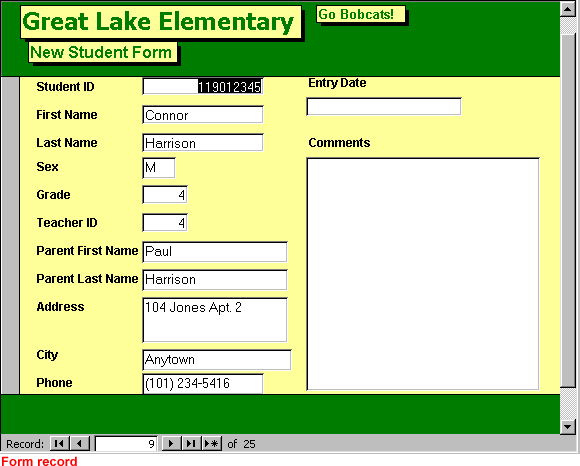
In the expansive landscape of database management, the ability to edit form records stands as a pivotal skill, essential for maintaining data accuracy, integrity, and relevance. Microsoft Access 2000, a pioneering relational database management system (RDBMS), empowers users with versatile tools and features for manipulating form records with precision and efficiency. In this comprehensive guide, we embark on an exhaustive exploration of editing form records in Access 2000, unraveling various methods, strategies, and best practices to empower users in their data manipulation endeavors.
Understanding Form Records Editing
Before delving into the intricacies of editing form records in Access 2000, it’s imperative to grasp the fundamental concept of form records within the database ecosystem. In Access 2000, a form record represents a single instance or entry of data within a form interface. Each record typically corresponds to a row in a table and encompasses fields representing specific attributes or properties of the data being stored. Forms provide users with a structured and user-friendly interface for entering, viewing, and editing data, facilitating seamless data management workflows.
Methods of Editing Form Records
Access 2000 offers users a plethora of methods for editing form records, catering to diverse preferences and workflow requirements:
- Form Controls Editing: The primary method of editing form records in Access 2000 involves interacting with form controls directly within the form interface. Users can navigate to the desired record within the form and modify field values using text boxes, drop-down lists, checkboxes, or other form controls. Access 2000 seamlessly updates the underlying data upon making changes, ensuring real-time synchronization between the form and the underlying table.
- Subform Editing: Subforms allow users to display related data from multiple tables within a single form interface, enabling efficient editing of interconnected records. Users can navigate to the subform within the main form and edit related records directly within the subform interface. Subforms provide users with a comprehensive view of interconnected data and streamline the process of editing form records with complex relationships.
- Update Queries: Access 2000 facilitates form record editing through the use of update queries, enabling users to modify multiple records simultaneously based on specified criteria. Users can create update queries to target specific records within the underlying table and apply changes to field values as needed. Update queries provide users with a powerful toolset for bulk editing of form records, enhancing productivity and efficiency.
- Visual Basic for Applications (VBA): Advanced users and developers can leverage VBA programming in Access 2000 to create custom form record editing routines and automation scripts. VBA enables users to implement complex logic, handle dynamic editing scenarios, and integrate with external systems or processes. By harnessing the power of VBA, users can customize and extend Access 2000’s functionality for specific form record editing requirements.
Best Practices for Editing Form Records
While editing form records in Access 2000 is relatively straightforward, adhering to best practices can optimize efficiency, accuracy, and data integrity:
- Data Validation: Implementing data validation rules and constraints helps maintain data integrity and consistency during form record editing. Access 2000 allows users to define validation rules for form fields, ensuring that only valid data entries are accepted. Validation rules can be enforced using built-in features such as input masks, field properties, or custom validation expressions.
- Concurrency Control: Managing concurrent access to form records is crucial for preventing data conflicts and ensuring data integrity. Access 2000 offers concurrency control mechanisms such as record locking and optimistic concurrency, allowing users to control access to form records and prevent simultaneous edits by multiple users.
- Error Handling: Implementing robust error handling mechanisms helps mitigate the risk of data entry errors and ensures smooth form record editing processes. Access 2000 allows users to create custom error handling routines using VBA code, enabling them to handle runtime errors, display informative error messages, and gracefully recover from unexpected situations.
- Transaction Management: Leveraging transactions helps ensure atomicity, consistency, isolation, and durability (ACID properties) in form record editing operations. Access 2000 allows users to define transaction boundaries and roll back changes in case of errors or exceptions, providing a reliable mechanism for managing complex editing scenarios and ensuring data integrity.
Conclusion
In conclusion, mastering the art of editing form records in Access 2000 is essential for proficient database management and data manipulation. By leveraging the diverse methods, strategies, and best practices outlined in this guide, users can streamline the process of editing form records, uphold data integrity and accuracy, and unlock the full potential of Access 2000 for efficient data management. Whether you’re a novice user or an experienced database administrator, proficiency in editing form records empowers you to navigate the complexities of database management with confidence and precision.